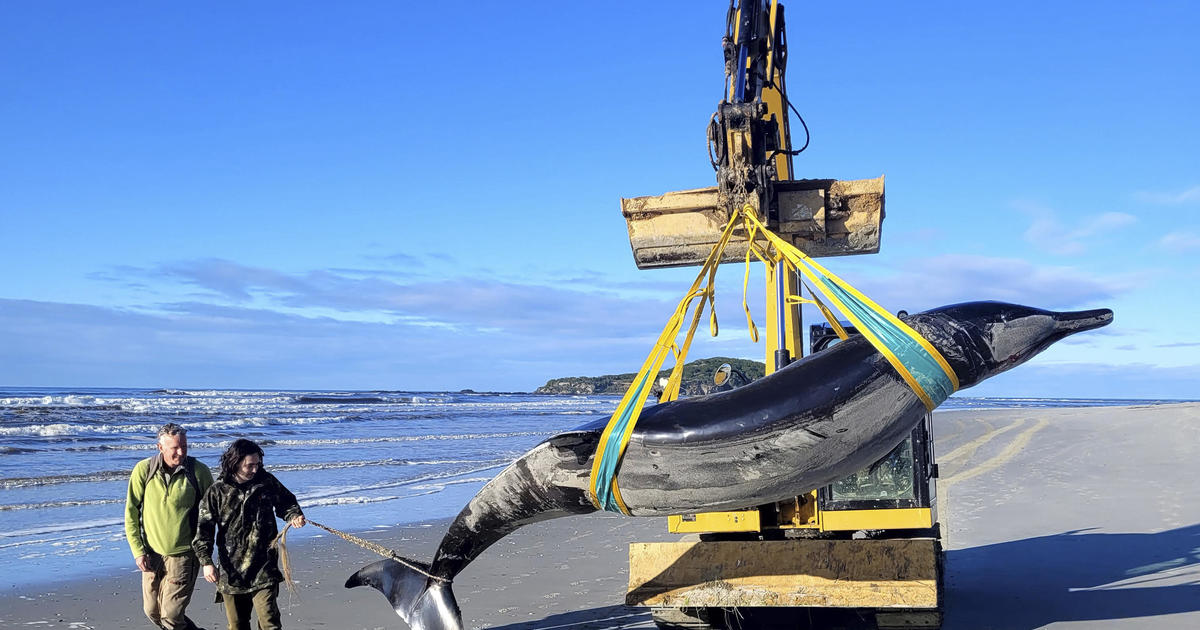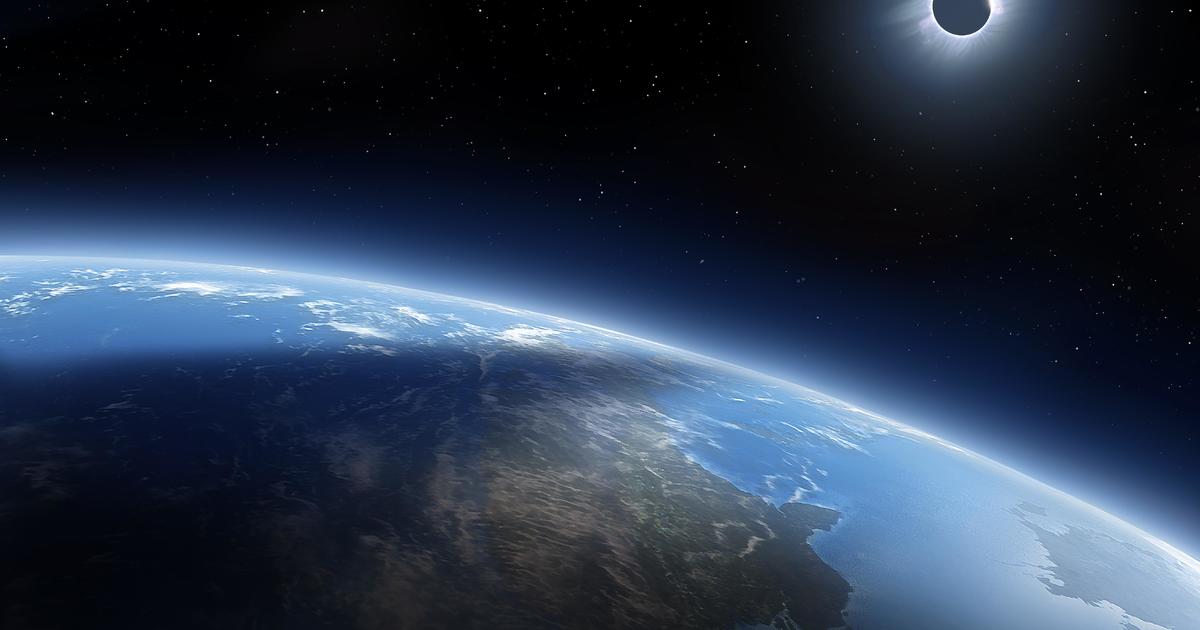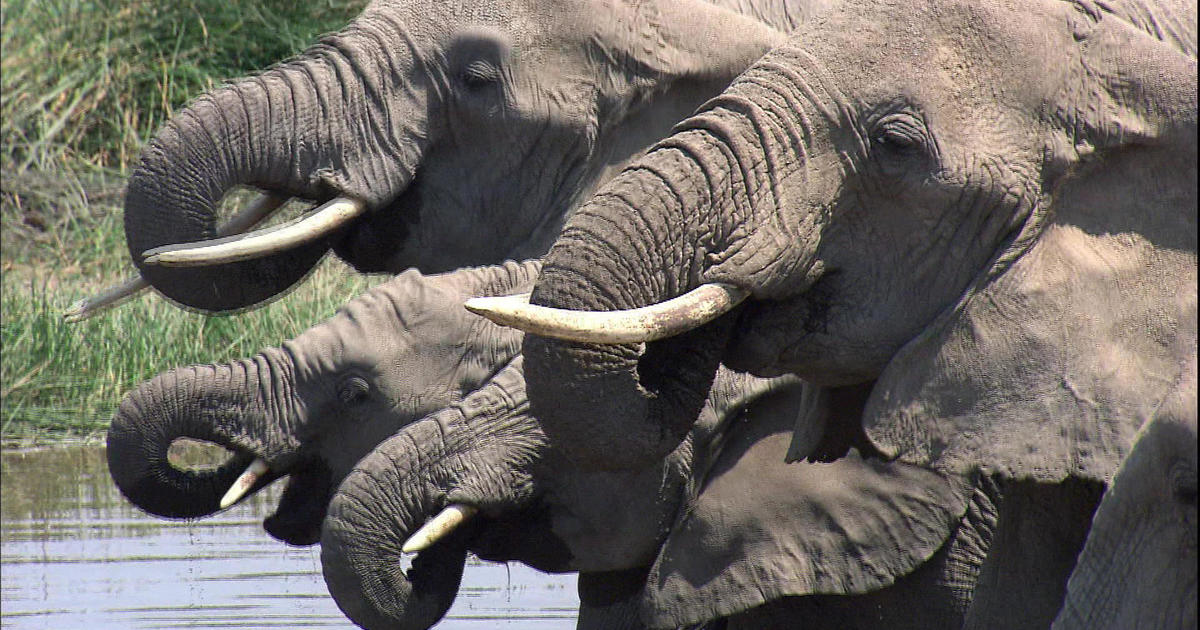Science & Environment
Creature that washed up on New Zealand beach may be world’s rarest whale — a spade-toothed whale

Wellington, New Zealand — Spade-toothed whales are the world’s rarest, with no live sightings ever recorded. No one knows how many there are, what they eat, or even where they live in the vast expanse of the southern Pacific Ocean. However, scientists in New Zealand may have finally caught a break.
The country’s conservation agency said Monday a creature that washed up on a South Island beach this month is believed to be a spade-toothed whale. The five-meter-long creature, a type of beaked whale, was identified after it washed ashore on Otago beach from its color patterns and the shape of its skull, beak and teeth
“We know very little, practically nothing” about the creatures, Hannah Hendriks, Marine Technical Advisor for the Department of Conservation, told The Associated Press. “This is going to lead to some amazing science and world-first information.”
If the cetacean is confirmed to be the elusive spade-toothed whale, it would be the first specimen found in a state that would permit scientists to dissect it, allowing them to map the relationship of the whale to the few others of the species found and learn what it eats and perhaps lead to clues about where they live.
Only six other spade-toothed whales have ever been pinpointed, and those found intact on New Zealand’s North Island beaches had been buried before DNA testing could verify their identification, Hendriks said, thwarting any chance to study them.
This time, the beached whale was quickly transported to cold storage and researchers will work with local Māori iwi (tribes) to plan how it will be examined, the conservation agency said.
New Zealand’s Indigenous people consider whales a taonga – a sacred treasure – of cultural significance. In April, Pacific Indigenous leaders signed a treaty recognizing whales as “legal persons,” although such a declaration is not reflected in the laws of participating nations.
Nothing is currently known about the whales’ habitat. The creatures deep-dive for food and likely surface so rarely that it has been impossible to narrow their location further than the southern Pacific Ocean, home to some of the world’s deepest ocean trenches, Hendriks said.
“It’s very hard to do research on marine mammals if you don’t see them at sea,” she said. “It’s a bit of a needle in a haystack. You don’t know where to look.”
The conservation agency said the genetic testing to confirm the whale’s identification could take months.
It took “many years and a mammoth amount of effort by researchers and local people” to identify the “incredibly cryptic” mammals, Kirsten Young, a senior lecturer at the University of Exeter who has studied spade-toothed whales, said in emailed remarks.
The fresh discovery “makes me wonder – how many are out in the deep ocean and how do they live?” Young said.
The first spade-toothed whale bones were found in 1872 on New Zealand’s Pitt Island. Another discovery was made at an offshore island in the 1950s, and the bones of a third were found on Chile’s Robinson Crusoe Island in 1986. DNA sequencing in 2002 proved that all three specimens were of the same species – and that it was one distinct from other beaked whales.
Researchers studying the mammal couldn’t confirm if the species went extinct. Then in 2010, two whole spade-toothed whales, both dead, washed up on a New Zealand beach. Firstly mistaken for one of New Zealand’s 13 other more common types of beaked whale, tissue samples – taken after they were buried – revealed them as the enigmatic species.
New Zealand is a whale-stranding hotspot, with more than 5,000 episodes recorded since 1840, according to the Department of Conservation.
Science & Environment
Earth will get a second “mini-moon” for 2 months this year

Earth will get a second moon for about two months this year when a small asteroid begins to orbit our planet. The asteroid was discovered in August and is set to become a mini-moon, revolving around Earth in a horseshoe shape from Sept. 29 to Nov. 25.
Researchers at the Asteroid Terrestrial-impact Last Alert System, an asteroid monitoring system funded by NASA, spotted the asteroid using an instrument in Sutherland, South Africa and labeled it 2024 PT5.
Scientists from the Universidad Complutense de Madrid have tracked the asteroid’s orbit for 21 days and determined its future path. 2024 PT5 is from the Arjuna asteroid belt, which orbits the sun, according to their study published in Research Notes of the AAs.
But Earth’s gravitational pull will draw 2024 PT5 towards it and, much like our moon, it will orbit our planet — but only for 56.6 days.
While other non-Earth objects, or NEOs, have entered Earth’s orbit before, some don’t complete full revolutions of Earth. Some, however, do and become so-called mini-moons.
An asteroid called 2020 CD3 was bound to Earth for several years before leaving the planet’s orbit in 2020 and another called 2022 NX1 became a mini-moon of Earth in 1981 and 2022 and will return again in 2051.
2024 PT5, which is larger than some of the other mini-moons, will also return to Earth’s orbit — in 2055.
Earth’s gravity will pull it into its orbit and the asteroid will have negative geocentric energy, meaning it can’t escape Earth’s gravitational pull. It will orbit around Earth in a horseshoe shape before reverting back to heliocentric energy, meaning it will rotate around the sun again, like the other planets and NEOs in our galaxy.
Even after it leaves orbit, it will stay near Earth for a few months, making its closest approach on Jan. 9, 2025. Soon after, it will leave Earth’s neighborhood until its path puts it back into our orbit in about 30 years.
The study’s lead author Carlos de la Fuente Marcos told Space.com the mini-moon will be too small to see with amateur telescopes or binoculars but professional astronomers with stronger tools will be able to spot it.
CBS News has reached out to Marcos for further information and is awaiting response.
Science & Environment
Climate change is making days longer, according to new research

Climate change is making days longer, as the melting of glaciers and polar ice sheets causes water to move closer to the equator, fattening the planet and slowing its rotation, according to a recent study.
Research published in the Proceedings of the National Academy of Sciences used both observations and reconstructions to track variations of mass at Earth’s surface since 1900.
In the 20th century, researchers found that between 0.3 milliseconds per century and 1 millisecond per century were added to the length of a day by climate-induced increases. Since 2000, they found that number accelerated to 1.3 milliseconds per century.
“We can see our impact as humans on the whole Earth system, not just locally, like the rise in temperature, but really fundamentally, altering how it moves in space and rotates,” Benedikt Soja of ETH Zurich in Switzerland told Britain’s Guardian newspaper. “Due to our carbon emissions, we have done this in just 100 or 200 years, whereas the governing processes previously had been going on for billions of years. And that is striking.”
Researchers said that, under high greenhouse gas emission scenarios, the climate-induced increase in the length of a day will continue to grow and could reach a rate twice as large as the present one. This could have implications for a number of technologies humans rely on, like navigation.
“All the data centers that run the internet, communications and financial transactions, they are based on precise timing,” Soja said. “We also need a precise knowledge of time for navigation, and particularly for satellites and spacecraft.”
Science & Environment
The Buck Moon is almost here. Here’s when and where to see July’s full moon.

The next full moon is arriving just in time for the weekend. According to NASA, the Buck Moon will make an appearance for three days, from Friday evening to Monday morning, reaching its peak at 6:17 a.m. EDT on Sunday.
The moon is also known as the Thunder Moon, given its overlap with thunderstorm season.
NASA advised viewers to stay safe from the lightning that comes with the storms, but also to indulge in a little fun as the Buck Moon arrives: “As usual, the wearing of suitably celebratory celestial attire is encouraged in honor of the full Moon.”
Why is it called the Buck Moon?
The name stems from a tradition established by the Maine Farmers’ Almanac in the 1930s, according to NASA, when the publication started listing the names of full moons. The Algonquin tribes of the Northeast reportedly called this month’s moon the Buck Moon – a nod to the deer that emerge this time of year.
“Early summer is normally when the new antlers of buck deer push out of their foreheads in coatings of velvety fur,” NASA said.
Other monikers for July’s full moon include Thunder Moon, Asalha Puja, Guru Full Moon, Hay Moon. and Mead Moon.
When will the next full moon take place?
August’s full moon — known as the Sturgeon Moon, according to the almanac.com — will peak on Monday, Aug. 19. This will be the first supermoon of the year, which means it will appear brighter and larger than other full moons.
Another event for stargazers to look forward to is a meteor shower on Saturday, July 31. Those on the East Coast will have to rise early if they want to catch the spectacle of light. According to NASA, the best time to see the shower from Washington, D.C., will be around 2 a.m.
Science & Environment
Secrets of the elephant – CBS News

Watch CBS News
Be the first to know
Get browser notifications for breaking news, live events, and exclusive reporting.
Science & Environment
“Cocaine sharks”: Predators off coast of Brazil test positive for drug, scientists say

Sharks in the waters off Brazil have tested positive for cocaine, marine biologists said in a new study, marking the first time the drug has been found in the free-ranging predators.
Thirteen sharpnose sharks were taken from the coast off of Rio de Janeiro and tested for the cocaine and benzoylecgonine, the primary molecule in cocaine. Each shark’s liver and muscles tested positive for high levels of cocaine, the study found, and the female sharks tested had higher concentrations of cocaine in their muscles than male sharks.
The scientists — who dubbed the study “Cocaine Shark” — posited that this may show a correlation between a shark’s weight and size and how it metabolizes cocaine, but the study noted that more research was necessary.
CBS News partner BBC News reported that experts have multiple theories on how the illicit substances are entering the water. It’s possible that illegal labs where cocaine is manufactured could be to blame. Scientists also said that it could be entering the waterway through the excrement of drug users. A less likely theory is that packs of cocaine lost or dumped at sea could be to blame. Cocaine and other illicit drugs have previously been found in water drainage systems and in rivers.
It’s the first study to show levels of cocaine and benzoylecgonine in free-ranging sharks. More research is necessary to see how cocaine consumption affects sharks and other wildlife, the scientists said.
It’s not clear how the cocaine consumption affects the sharks, the study said. Some of the female sharks were pregnant at the time of the study, and it remains unclear how the illicit drugs may have affected the fetuses.
The findings are “very important and potentially worrying,” marine eco-toxicologist Sara Novais, from the Marine and Environmental Sciences Centre of the Polytechnic University of Leiria, told Science magazine.
Researchers have tried to study the impact of illicit drugs on sea life in other parts of the world. Last year, Discovery TV aired a show called “Cocaine Sharks” (which was also the title of a 2023 horror movie) that used experiments to show how sharks might be affected by cocaine. Tracy Fanara, an environmental engineer who worked on the show, told CBS News that the experiments and their results were preliminary, but said it’s likely that sharks are coming in contact with the illicit drug.
“My goal of this experiment was to shed light on the real problem of chemicals in our waterways and impacting our aquatic life and then eventually impacting us,” Fanara said in 2023. “But the goal of the study was basically to see if this is a research question worth exploring more. And I would say, yes, it is.”
Science & Environment
Monday was hottest day ever measured by humans, beating Sunday, European science service says: “Uncharted territory”

Monday was the hottest day ever measured by humans, beating a record set the day before, as countries across the globe continue to feel the heat, according to the European climate change service.
Provisional satellite data published by Copernicus early Wednesday showed that Monday broke Sunday’s mark by 0.1 degree Fahrenheit.
Climate scientists say the world is now as warm as it was 125,000 years ago because of human-caused climate change. While scientists can’t be certain that Monday was the hottest day throughout that period, average temperatures haven’t been this high since long before humans developed agriculture.
The temperature rise in recent decades is in line with what climate scientists projected would happen if humans kept burning fossil fuels at an increasing rate.
“We are in an age where weather and climate records are frequently stretched beyond our tolerance levels, resulting in insurmountable loss of lives and livelihoods,” said Roxy Mathew Koll, a climate scientist at the Indian Institute of Tropical Meteorology.
Copernicus’ preliminary data shows the global average temperature Monday was 62.87 degrees Fahrenheit.
The previous mark before this week was set just a year ago.
Before last year, the previous recorded hottest day was in 2016, when average temperatures were 62.24 degrees.
While 2024 has been extremely warm, what kicked Sunday into new territory was a way toastier than usual Antarctic winter, according to Copernicus. The same thing was happening on the southern continent last year when the record was set in early July.
But it wasn’t just a warmer Antarctica on Sunday. Interior California baked with triple digit heat, complicating the fighting of more than two dozen wildfires in the West. At the same time, Europe sweltered through its own deadly heat wave.
Copernicus records go back to 1940, but other global measurements by the United States and United Kingdom governments go back even further, to 1880. Many scientists, taking those into consideration along with tree rings and ice cores, say last year’s record highs were the hottest the planet has been in about 120,000 years. Now the first six months of 2024 have broken even those.
Frequency of records being surpassed cited as worrisome
Without human-caused climate change, scientists say extreme temperature records wouldn’t be broken nearly as frequently as in recent years.
“It’s certainly a worrying sign coming on the heels of 13 straight record-setting months,” said Berkeley Earth climate scientist Zeke Hausfather, who now estimates there’s a 92% chance that 2024 will beat 2023 as the warmest year on record.
The former head of U.N. climate negotiations, Christiana Figueres, said “We all (will) scorch and fry” if the world doesn’t immediately change course. “One third of global electricity can be produced by solar and wind alone, but targeted national policies have to enable that transformation,” she said.
“What is truly staggering is how large the difference is between the temperature of the last 13 months and the previous temperature records,” Copernius Director Carlo Buontempo said in a statement. “We are now in truly uncharted territory and as the climate keeps warming, we are bound to see new records being broken in future months and years.”
July is generally the hottest month of the year globally, mostly because there’s more land in the Northern Hemisphere, so seasonal patterns there drive global temperatures.
Recent climate change contributors
Scientists blame the supercharged heat mostly on climate change from the burning of coal, oil and natural gas and on livestock agriculture. Other factors include a natural El Nino warming of the central Pacific Ocean, which has since ended. Reduced marine fuel pollution and possibly an undersea volcanic eruption are also causing some additional warmth, but those aren’t as important as greenhouse gases trapping heat, they said.
Because El Nino is likely to be soon replaced by a cooling La Nina, Hausfather said he would be surprised if 2024 sees any more monthly records, but the hot start of the year is still probably enough to make it warmer than last year.
Sunday’s mark was notable but “what really kind of makes your eyeballs jump out” is how the last few years have been so much hotter than previous marks, said Northern Illinois University climate scientist Victor Gensini, who wasn’t part of the Copernicus team. “It’s certainly a fingerprint of climate change.”
University of Pennsylvania climate scientist Michael Mann said the difference between the this year’s and last year’s high mark is so tiny and so preliminary that he is surprised the European climate agency is promoting it.
“We should really never be comparing absolute temperatures for individual days,” Mann said in an email.
Yes, it’s a small difference, Gensini said in an interview, but there have been more than 30,500 days since Copernicus data started in 1940, and this is the hottest of them all.
“What matters is this,” said Texas A&M University climate scientist Andrew Dessler. “The warming will continue as long as we’re dumping greenhouse gases into the atmosphere. … We have the technology to largely stop doing that today. What we lack is political will.”
-

 Sport15 hours ago
Sport15 hours agoJoshua vs Dubois: Chris Eubank Jr says ‘AJ’ could beat Tyson Fury and any other heavyweight in the world
-

 News2 days ago
News2 days agoYou’re a Hypocrite, And So Am I
-

 News16 hours ago
News16 hours agoIsrael strikes Lebanese targets as Hizbollah chief warns of ‘red lines’ crossed
-

 Sport15 hours ago
Sport15 hours agoUFC Edmonton fight card revealed, including Brandon Moreno vs. Amir Albazi headliner
-

 Technology14 hours ago
Technology14 hours agoiPhone 15 Pro Max Camera Review: Depth and Reach
-

 Science & Environment18 hours ago
Science & Environment18 hours ago‘Running of the bulls’ festival crowds move like charged particles
-

 Science & Environment18 hours ago
Science & Environment18 hours agoHow one theory ties together everything we know about the universe
-

 Science & Environment1 day ago
Science & Environment1 day agoSunlight-trapping device can generate temperatures over 1000°C
-

 News13 hours ago
News13 hours agoBrian Tyree Henry on voicing young Megatron, his love for villain roles
-

 Science & Environment1 day ago
Science & Environment1 day agoQuantum time travel: The experiment to ‘send a particle into the past’
-

 CryptoCurrency15 hours ago
CryptoCurrency15 hours ago2 auditors miss $27M Penpie flaw, Pythia’s ‘claim rewards’ bug: Crypto-Sec
-

 CryptoCurrency15 hours ago
CryptoCurrency15 hours agoBitcoin miners steamrolled after electricity thefts, exchange ‘closure’ scam: Asia Express
-

 CryptoCurrency15 hours ago
CryptoCurrency15 hours agoCardano founder to meet Argentina president Javier Milei
-

 CryptoCurrency15 hours ago
CryptoCurrency15 hours agoDorsey’s ‘marketplace of algorithms’ could fix social media… so why hasn’t it?
-

 CryptoCurrency15 hours ago
CryptoCurrency15 hours agoLow users, sex predators kill Korean metaverses, 3AC sues Terra: Asia Express
-
Business14 hours ago
How Labour donor’s largesse tarnished government’s squeaky clean image
-

 Politics1 day ago
Politics1 day agoKeir Starmer facing flashpoints with the trade unions
-

 Science & Environment22 hours ago
Science & Environment22 hours agoQuantum ‘supersolid’ matter stirred using magnets
-
News15 hours ago
Freed Between the Lines: Banned Books Week
-

 MMA15 hours ago
MMA15 hours agoUFC’s Cory Sandhagen says Deiveson Figueiredo turned down fight offer
-

 CryptoCurrency14 hours ago
CryptoCurrency14 hours agoEthereum is a 'contrarian bet' into 2025, says Bitwise exec
-

 Science & Environment18 hours ago
Science & Environment18 hours agoHow to wrap your head around the most mind-bending theories of reality
-

 Technology2 days ago
Technology2 days agoCan technology fix the ‘broken’ concert ticketing system?
-

 Fashion Models14 hours ago
Fashion Models14 hours agoMiranda Kerr nude
-

 Fashion Models14 hours ago
Fashion Models14 hours ago“Playmate of the Year” magazine covers of Playboy from 1971–1980
-

 News3 days ago
News3 days agoDid the Pandemic Break Our Brains?
-

 Science & Environment23 hours ago
Science & Environment23 hours agoA new kind of experiment at the Large Hadron Collider could unravel quantum reality
-

 Politics14 hours ago
Politics14 hours agoLabour MP urges UK government to nationalise Grangemouth refinery
-

 Science & Environment22 hours ago
Science & Environment22 hours agoHow Peter Higgs revealed the forces that hold the universe together
-

 Science & Environment18 hours ago
Science & Environment18 hours agoRethinking space and time could let us do away with dark matter
-

 Science & Environment15 hours ago
Science & Environment15 hours agoWe may have spotted a parallel universe going backwards in time
-

 CryptoCurrency15 hours ago
CryptoCurrency15 hours agoArthur Hayes’ ‘sub $50K’ Bitcoin call, Mt. Gox CEO’s new exchange, and more: Hodler’s Digest, Sept. 1 – 7
-

 CryptoCurrency15 hours ago
CryptoCurrency15 hours agoTreason in Taiwan paid in Tether, East’s crypto exchange resurgence: Asia Express
-

 CryptoCurrency15 hours ago
CryptoCurrency15 hours agoLeaked Chainalysis video suggests Monero transactions may be traceable
-

 CryptoCurrency15 hours ago
CryptoCurrency15 hours agoJourneys: Robby Yung on Animoca’s Web3 investments, TON and the Mocaverse
-

 CryptoCurrency15 hours ago
CryptoCurrency15 hours agoLouisiana takes first crypto payment over Bitcoin Lightning
-

 CryptoCurrency15 hours ago
CryptoCurrency15 hours agoAre there ‘too many’ blockchains for gaming? Sui’s randomness feature: Web3 Gamer
-

 CryptoCurrency15 hours ago
CryptoCurrency15 hours agoCrypto whales like Humpy are gaming DAO votes — but there are solutions
-

 CryptoCurrency15 hours ago
CryptoCurrency15 hours agoHelp! My parents are addicted to Pi Network crypto tapper
-

 CryptoCurrency15 hours ago
CryptoCurrency15 hours ago$12.1M fraud suspect with ‘new face’ arrested, crypto scam boiler rooms busted: Asia Express
-

 CryptoCurrency15 hours ago
CryptoCurrency15 hours ago‘Everything feels like it’s going to shit’: Peter McCormack reveals new podcast
-

 Science & Environment18 hours ago
Science & Environment18 hours agoWhy we need to invoke philosophy to judge bizarre concepts in science
-

 Science & Environment18 hours ago
Science & Environment18 hours agoFuture of fusion: How the UK’s JET reactor paved the way for ITER
-

 CryptoCurrency15 hours ago
CryptoCurrency15 hours agoSEC sues ‘fake’ crypto exchanges in first action on pig butchering scams
-

 CryptoCurrency15 hours ago
CryptoCurrency15 hours agoFed rate cut may be politically motivated, will increase inflation: Arthur Hayes
-

 CryptoCurrency15 hours ago
CryptoCurrency15 hours agoDecentraland X account hacked, phishing scam targets MANA airdrop
-

 CryptoCurrency15 hours ago
CryptoCurrency15 hours agoCZ and Binance face new lawsuit, RFK Jr suspends campaign, and more: Hodler’s Digest Aug. 18 – 24
-

 CryptoCurrency15 hours ago
CryptoCurrency15 hours agoCertiK Ventures discloses $45M investment plan to boost Web3
-

 CryptoCurrency15 hours ago
CryptoCurrency15 hours agoMemecoins not the ‘right move’ for celebs, but DApps might be — Skale Labs CMO
-

 CryptoCurrency15 hours ago
CryptoCurrency15 hours agoTelegram bot Banana Gun’s users drained of over $1.9M
-

 CryptoCurrency15 hours ago
CryptoCurrency15 hours agoDZ Bank partners with Boerse Stuttgart for crypto trading
-

 CryptoCurrency15 hours ago
CryptoCurrency15 hours agoRedStone integrates first oracle price feeds on TON blockchain
-

 CryptoCurrency15 hours ago
CryptoCurrency15 hours agoBitcoin bulls target $64K BTC price hurdle as US stocks eye new record
-

 CryptoCurrency15 hours ago
CryptoCurrency15 hours agoSEC asks court for four months to produce documents for Coinbase
-

 CryptoCurrency15 hours ago
CryptoCurrency15 hours ago‘No matter how bad it gets, there’s a lot going on with NFTs’: 24 Hours of Art, NFT Creator
-

 CryptoCurrency15 hours ago
CryptoCurrency15 hours agoBlockdaemon mulls 2026 IPO: Report
-
Business15 hours ago
Thames Water seeks extension on debt terms to avoid renationalisation
-
Politics15 hours ago
The Guardian view on 10 Downing Street: Labour risks losing the plot | Editorial
-

 Politics14 hours ago
Politics14 hours agoI’m in control, says Keir Starmer after Sue Gray pay leaks
-
Politics14 hours ago
‘Appalling’ rows over Sue Gray must stop, senior ministers say | Sue Gray
-
Business14 hours ago
UK hospitals with potentially dangerous concrete to be redeveloped
-
Business13 hours ago
Axel Springer top team close to making eight times their money in KKR deal
-

 News13 hours ago
News13 hours ago“Beast Games” contestants sue MrBeast’s production company over “chronic mistreatment”
-

 News13 hours ago
News13 hours agoSean “Diddy” Combs denied bail again in federal sex trafficking case
-

 News13 hours ago
News13 hours agoSean “Diddy” Combs denied bail again in federal sex trafficking case in New York
-

 News13 hours ago
News13 hours agoBrian Tyree Henry on his love for playing villains ahead of “Transformers One” release
-

 News13 hours ago
News13 hours agoBrian Tyree Henry on voicing young Megatron, his love for villain roles
-

 CryptoCurrency13 hours ago
CryptoCurrency13 hours agoCoinbase’s cbBTC surges to third-largest wrapped BTC token in just one week
-

 Technology4 days ago
Technology4 days agoYouTube restricts teenager access to fitness videos
-

 News17 hours ago
News17 hours agoChurch same-sex split affecting bishop appointments
-

 Politics2 days ago
Politics2 days agoTrump says he will meet with Indian Prime Minister Narendra Modi next week
-

 Politics1 day ago
Politics1 day agoWhat is the House of Lords, how does it work and how is it changing?
-

 Health & fitness2 days ago
Health & fitness2 days agoWhy you should take a cheat day from your diet, and how many calories to eat
-

 Technology16 hours ago
Technology16 hours agoFivetran targets data security by adding Hybrid Deployment
-

 News4 days ago
News4 days agoNathan Simpson appears in court over murder of Rachelle Simpson
-

 Science & Environment2 days ago
Science & Environment2 days agoElon Musk’s SpaceX contracted to destroy retired space station
-

 Science & Environment22 hours ago
Science & Environment22 hours agoSingle atoms captured morphing into quantum waves in startling image
-
Politics3 days ago
Starmer ally Hollie Ridley appointed as Labour general secretary | Labour
-

 Technology3 days ago
Technology3 days ago‘The dark web in your pocket’
-

 Business3 days ago
Business3 days agoGuardian in talks to sell world’s oldest Sunday paper
-

 MMA15 hours ago
MMA15 hours agoDiego Lopes declines Movsar Evloev’s request to step in at UFC 307
-

 Football15 hours ago
Football15 hours agoNiamh Charles: Chelsea defender has successful shoulder surgery
-

 Football15 hours ago
Football15 hours agoSlot's midfield tweak key to Liverpool victory in Milan
-

 Science & Environment18 hours ago
Science & Environment18 hours agoHyperelastic gel is one of the stretchiest materials known to science
-

 Fashion Models14 hours ago
Fashion Models14 hours agoAchtung Magazine
-

 Fashion Models14 hours ago
Fashion Models14 hours agoNuméro Switzerland
-

 Politics3 days ago
Politics3 days agoTrump Media breached ARC Global share agreement, judge rules
-

 Health & fitness2 days ago
Health & fitness2 days ago11 reasons why you should stop your fizzy drink habit in 2022
-

 Fashion Models14 hours ago
Fashion Models14 hours agoMixte
-

 Science & Environment1 day ago
Science & Environment1 day agoMaxwell’s demon charges quantum batteries inside of a quantum computer
-

 Technology2 days ago
Technology2 days agoWhat will future aerial dogfights look like?
-

 Science & Environment17 hours ago
Science & Environment17 hours agoOdd quantum property may let us chill things closer to absolute zero
-

 Science & Environment24 hours ago
Science & Environment24 hours agoQuantum forces used to automatically assemble tiny device
-

 Entertainment13 hours ago
Entertainment13 hours ago“Jimmy Carter 100” concert celebrates former president’s 100th birthday
-

 Business3 days ago
Business3 days agoDangers of being a FOMO customer as rates fall
-

 CryptoCurrency15 hours ago
CryptoCurrency15 hours agoSEC settles with Rari Capital over DeFi pools, unregistered broker activity
-

 News13 hours ago
News13 hours agoJoe Posnanski revisits iconic football moments in new book, “Why We Love Football”
-

 Health & fitness2 days ago
Health & fitness2 days agoHow to adopt mindful drinking in 2022
-

 Health & fitness2 days ago
Health & fitness2 days agoWhat 10 days of a clean eating plan actually does to your body and why to adopt this diet in 2022
-

 Health & fitness2 days ago
Health & fitness2 days agoHow to be more confident, and why it can help with anxiety, depression and ageing



You must be logged in to post a comment Login